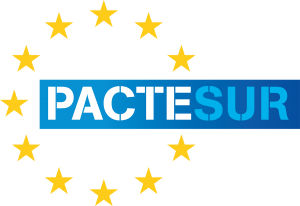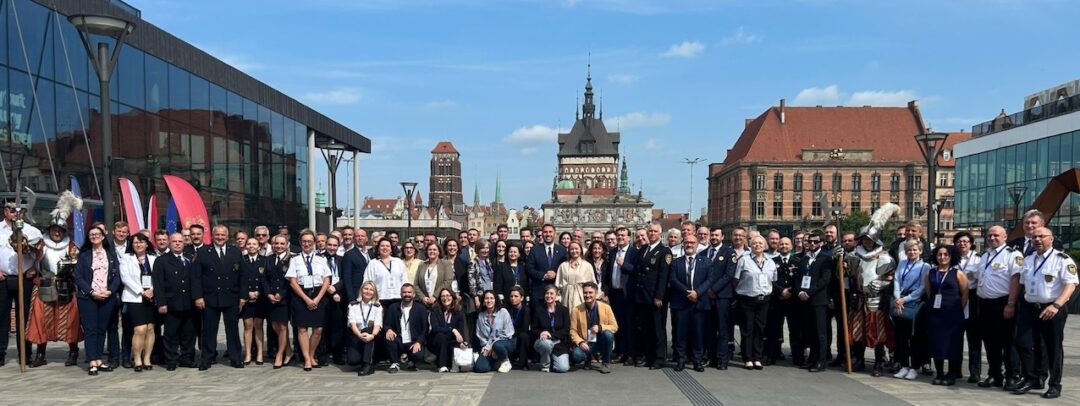
Susanne Skov Diemer is a consultant, risk mitigation and security specialist with 25 years of experience in the field. Since 2019, she is a member of the PACTESUR Expert Advisory Committee. In this interview, she explores how citizens can be better prepared to respond to potential threats in their daily life – from terrorist and cyber attacks to natural catastrophes.
What is the book about?
The book is a modern step-by-step urban survival guide on how to stay safe and (relatively) sane in case of crisis, emergency or disaster – for example a cyber or terror attack. I also address situations of civil unrest, flooding, and something as simple as an electrical breakdown. It is about prevention, preparedness and awareness.
The book encourages citizen participation in local governance and risk management and explains why and how citizens must take responsibility in the event of a crisis. The essence of the book is to offer a pragmatic guide about modern potential threats and how to handle them.
One of PACTESUR’s key objectives is to raise awareness among citizens and politicians on their role in prevention and as co-producers of security. How does the book contribute to this debate?
An important point of the book is to increase citizens’ understanding, preparedness and awareness of potential threats particularly in public spaces. Local and regional governments need to promote better awareness amongst citizens on the best practices to follow in the event of a threat, such as a terrorist attack. For example, we know that when there is a fire, we cannot use the elevator. We have internalised this behaviour because we are used to seeing the sign “In case of fire, do not use the elevator.” However, we have yet not developed a culture of collective security against terrorism and other current threats.
If citizens gain a better and broader understanding of threats, local and national authorities’ and police work in protecting public spaces would not be hampered – and that is a key objective of my book: to reduce these gaps by sharing know-how and recommendations for citizens.
How can we improve communication in emergency and crisis management?
It is of great importance that citizens be prepared for a crisis, especially mentally. Stress and fear can cause irrational and damaging behaviour. The COVID-19 crisis has shown the ways in which citizens have reacted to the crisis and how differently they have handled the recommendations of public authorities. At the beginning of the pandemic, people were panic buying and stockpiling toilet paper, canned foods or flour. Insufficient and unclear information on the pandemic and conflicting advice from governments played a huge factor in people’s reaction to the crisis. Early measures taken by the authorities did not seem to reassure them and some citizens lost confidence in their governments to contain the pandemic. Local and national authorities need to improve the reliability, speed and efficiency of their communication channels with citizens and better explain current threats and how to react to them. Public awareness, transparency and openness are key – when citizens gain a better understanding of threats, they react in a more constructive, responsible manner. It is easier to guide a crowd who is informed and understands the risks and consequences.
It is also crucial to prioritise the use of official communication channels in order to stop the spread of fake news, misleading information and damaging assumptions. This can take the form of a local or national website or through social media platforms, where authorities can post reliable information and live updates. For instance, the Danish police posted on their social media profiles key information, facts and recommendations on the Covid-19 crisis. In case of crisis, they use a special hashtag, which is #kriseinfodk (crisis information Denmark), where they also address rumours and uncertainties to stop fake news. The department for Emergencies, Crisis and Disasters in Denmark is also very active on social media. They share advice on how to prevent disasters, for example in case of bad weather, and provide simple recommendations in case of fire or explosion (see picture below). These social media tools have become an efficient, quick and direct line of communication with citizens prior, during and after a crisis. When there is a disaster, a crisis or an emergency, Danish citizens and Danish media know they can rely on these official communication channels for facts, the most recent updates and recommendations.

In short, authorities need to better communicate the fact that they cannot – and should not – handle a crisis alone. It is a joint effort that involves citizens. It is about making sure we as citizens can take care of ourselves so that law enforcement agencies have the necessary time and space to do what they have to do. This is in line with one of PACTESUR’s key objectives: to raise awareness among citizens and politicians on their role in preventing threats in public spaces. Citizens must be involved in co-producing safety and security.
How can citizens assist local authorities in the protection of public spaces against threats?
If citizens are more prepared at a practical and emotional level, authorities can better focus on crisis and emergency management. In my book, I provide advice to readers on how to be better prepared and respond to potential threats. One cannot expect everything from the authorities and citizens need to take responsibility and be prepared for a potential crisis at all levels.
At a personal level, I encourage families to develop a plan for a potential crisis: what do we do if a crisis or an accident happens? Who does what and where? “Stay away from public transportation”, “report the incident”, “seek help”, “go home”. These recommendations also include storing food and water and having a first aid kit. It may sound basic, but it is crucial and will allow local authorities to better manage their valuable time and efforts on other critical issues for the benefit of us all. I also recommend citizens establish what I call a “unit”. A “unit” can be composed of family members, friends or neighbours who come together to establish a plan in case of emergency. It is especially important if you have children who go back and forth between their divorced parents’ homes, or if you have elderly parents. Such a plan allows not only to avoid panic and stress in trying to find your beloved ones, but also prevents emergency services to be overwhelmed by the public, for example when phone lines are saturated. At school, children should receive training, guidelines and advice for emergency situations. In Copenhagen, I give risk awareness lectures to international students, for example to prevent and reduce the risk of kidnapping in public spaces.
In the 1970s, Scandinavian countries were better prepared for worst-case scenarios. Back then, people knew what to do in the event of a Soviet nuclear attack, community shelters and bunkers were built and food was stored. The world has changed today, terrorist attacks have taken different forms and the same responses and tools are no longer sufficient. I call it the “inconvenient truth” of how the world is, but the risk is out there and we need to tackle the problem head-on. Open and clear communication is crucial in successful crisis management.
You have been appointed security advisor for the EU-project MONICA, a project on how cities can use Internet of Things (IoT) technologies to manage security at large-scale events. You have also assisted architects with integrating security solutions and terror prevention measures into urban planning and design. What have you learned from these experiences?
By working with both the public and private sector in different sectors and countries, I have learned a great deal about the importance of public-private cooperation in finding safe and suitable solutions to manage security at large events and keeping cities and countries safe. These experiences and learnings have confirmed to me that we need to develop a better coordinated, and increasingly well-defined security cooperation between the public and private sector. We need to come together to maximise synergies and share information, best practices and experiences for everyone’s benefit and safety.
The MONICA project, which comprises 29 partners and 9 countries, demonstrates how cities can use IoT technologies to support the management of security at large events. It also exposes how vulnerable a society is if technology fails and how easy it is for hackers to sabotage internal networks. A perfect IoT solution is unfortunately not so perfect if there is a power failure. This is why I believe that we should always have an analogue backup on critical issues. This is especially relevant in the area of safety and security, when citizens’ health and safety are at stake. It is indeed a very complicated task but it is a win-win process.
Why did you write the book?
The book has been years in the making and it is the first of its kind in Denmark. I have been a risk mitigation consultant and security analyst for 25 years and I am delighted to share a hands-on guide after all these years in the security world, working within the public, private and cooperative sector across Europe and the United States.
My motivation is to give readers tools and step-by-step recommendations so they can better prepare for emergencies, disasters and crises and also better cooperate with public authorities. We cannot expect authorities to do everything for us. We can – and should – make a difference by taking responsibility. We owe that to ourselves, our families, our community and our country.
The opinions expressed in this publication are those of the authors. They do not purport to reflect the opinions or views of Efus.
About the author
- Susanne Skov Diemer is a risk mitigation and security specialist with 25 years of experience in the field. Since 2019, she is a member of the PACTESUR Expert Advisory Committee.
- She has also participated in the protection and security management and coordination for state visits, Denmark’s Presidency of the Council of the EU, COP15, International Olympic Committee Meeting, among many others large-scale public events.
- She is the recipient of various U.S. government awards for her work during her time with the U.S. Department of State, Diplomatic Security.
About the book
- Published by People’s Press, Forbered dig bedst på det værste (how to best prepare for the worst) was released in Denmark in September and has since been in the top 10 non-fiction bestseller list.
- An English version of the book is in the making and can be pre-ordered at: book@susanneskovdiemer.com
About PACTESUR
- The PACTESUR project aims to empower cities and local actors in the field of security of urban public spaces facing threats, such as terrorist attacks. Through a bottom-up approach, the project federates local decision makers, security forces, urban security experts, urban planners, IT developers, trainers, front-line practitioners, designers and others in order to shape new European local policies to secure public spaces against terrorist attacks

Contact:
Tatiana Morales, Programme Manager: morales@efus.eu
Martí Navarro Regàs, Programme Manager: navarroregas@efus.eu
Marta Pellón Brussosa, PACTESUR Communication Officer: pellonbrussosa@efus.eu





